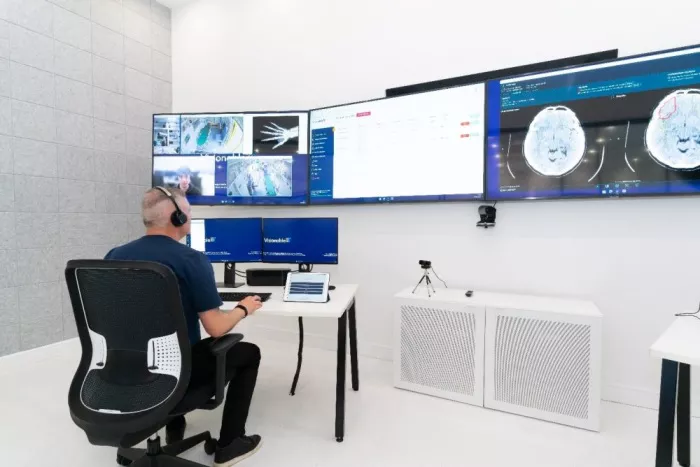Borderline Histrionic Personality Disorder (BHPD) is a complex and often misunderstood mental health condition that falls within the broader spectrum of personality disorders. This article aims to provide an in-depth exploration of BHPD, shedding light on its characteristics, diagnostic criteria, prevalence, potential causes, and treatment options.
A Brief Overview
Before delving into the specifics of Borderline Histrionic Personality Disorder, it is essential to have a foundational understanding of personality disorders. These are enduring patterns of inner experience and behavior that deviate significantly from societal expectations, encompassing various areas of an individual’s life. Personality disorders are typically diagnosed in adulthood but may have roots in early life experiences.
A Prelude to Borderline Histrionic Personality Disorder
Histrionic personality traits, characterized by excessive attention-seeking, emotional expression, and a desire to be the center of attention, form the basis of Borderline Histrionic Personality Disorder. Individuals with histrionic traits often display a pervasive pattern of seeking approval and affirmation, engaging in seductive behavior, and experiencing discomfort when not the focus of attention.
Clinical Criteria and Characteristics
Borderline Histrionic Personality Disorder combines elements of both borderline and histrionic personality styles, resulting in a unique and challenging clinical presentation. The Diagnostic and Statistical Manual of Mental Disorders, Fifth Edition (DSM-5), outlines specific criteria for the diagnosis of BHPD, including patterns of unstable relationships, impulsivity, identity disturbance, and intense emotional experiences.
Prevalence and Gender Differences
Estimating the prevalence of Borderline Histrionic Personality Disorder can be challenging due to underreporting and misdiagnosis. Nevertheless, research suggests that BHPD is more commonly diagnosed in women than in men. Exploring the gender differences in prevalence can provide valuable insights into the nuanced nature of this disorder and its impact on diverse populations.
Causes and Risk Factors
The origins of Borderline Histrionic Personality Disorder are multifaceted, involving a combination of genetic, environmental, and neurobiological factors. Early life experiences, such as traumatic events or inconsistent parenting, may contribute to the development of BHPD. Additionally, genetic predispositions and alterations in brain structure and function play a role in shaping the personality traits associated with this disorder.
Comorbidity
Individuals with Borderline Histrionic Personality Disorder often experience comorbidities with other mental health conditions, further complicating diagnosis and treatment. Common comorbidities include mood disorders, anxiety disorders, and substance use disorders. Understanding the interconnectedness of these conditions is crucial for developing comprehensive and effective treatment strategies for individuals with BHPD.
Diagnosis and Assessment
Accurate diagnosis of Borderline Histrionic Personality Disorder requires a comprehensive assessment conducted by qualified mental health professionals. The assessment process involves a thorough examination of the individual’s history, symptoms, and observed behaviors. The use of standardized tools and clinical interviews aids in differentiating BHPD from other personality disorders and mental health conditions.
Treatment Approaches
Managing Borderline Histrionic Personality Disorder poses unique challenges for mental health professionals. Various therapeutic modalities have demonstrated efficacy in addressing the core features of BHPD. Dialectical Behavior Therapy (DBT), psychodynamic therapy, and cognitive-behavioral therapy (CBT) are among the approaches commonly used to help individuals with BHPD develop healthier coping mechanisms and interpersonal skills.
Medication Management
While psychotherapy remains a cornerstone of Borderline Histrionic Personality Disorder treatment, medications may be prescribed to manage specific symptoms or comorbidities. Antidepressants, mood stabilizers, and antipsychotic medications are some of the pharmacological interventions that may be considered in conjunction with psychotherapeutic approaches. It is essential for clinicians to carefully weigh the potential benefits and risks of medication in each individual case.
Prognosis and Long-Term Outlook
The prognosis for individuals with Borderline Histrionic Personality Disorder varies, influenced by factors such as treatment adherence, social support, and the severity of symptoms. With appropriate and consistent treatment, many individuals with BHPD can experience significant improvement in their quality of life and functioning. Long-term recovery often involves ongoing therapy, support groups, and the development of coping strategies tailored to the individual’s unique needs.
Challenges in Research and Future Directions
The field of personality disorders, including Borderline Histrionic Personality Disorder, continues to evolve. Research challenges, such as the need for large-scale studies and standardized diagnostic criteria, persist. Future directions in BHPD research may focus on refining diagnostic tools, elucidating neurobiological underpinnings, and developing targeted interventions to enhance treatment outcomes.
Conclusion
In conclusion, Borderline Histrionic Personality Disorder is a complex and challenging mental health condition that warrants careful consideration and attention from clinicians, researchers, and the broader mental health community. Understanding the interplay between borderline and histrionic traits, exploring causes and risk factors, and implementing evidence-based treatments are crucial steps toward fostering a more comprehensive and compassionate approach to supporting individuals with BHPD on their journey to recovery.
[inline_related_posts title=”You Might Be Interested In” title_align=”left” style=”list” number=”6″ align=”none” ids=”959,4800,4616″ by=”categories” orderby=”rand” order=”DESC” hide_thumb=”no” thumb_right=”no” views=”no” date=”yes” grid_columns=”2″ post_type=”” tax=””]
































